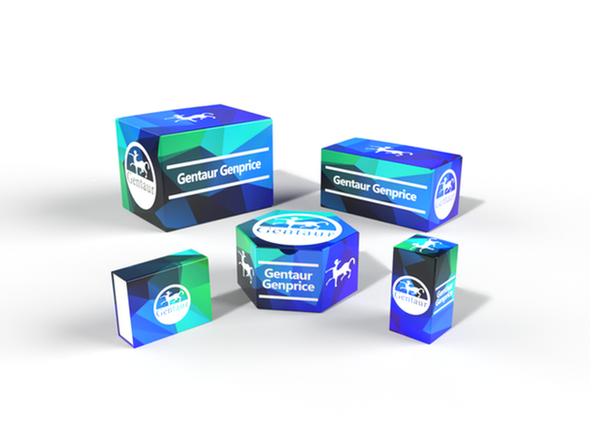Description
IgG4 Antibody [IHCG4-1] | 34-052 | Gentaur UK, US & Europe Distribution
Host: Mouse
Reactivity: Human
Homology: N/A
Immunogen: A human recombinant protein corresponding to the Fc region was used as the immunogen for this IgG4 antibody.
Research Area: Immunology
Tested Application: Flow, IHC, IF
Application: Flow Cytometry: 0.5-1ug/10^6 cells
IF: 1-2 ug/ml
IHC (FFPE) : 0.5-1 ug/ml for 30 min at RT (1)
The concentration stated for each application is a general starting point. Variations in protocols, secondaries and substrates may require the IgG4 antibody to be titered up or down for optimal performance.
1. Staining of FFPE tissue is enhanced by boiling sections in 10mM Tris with 1mM EDTA, pH9 for 10-20 min followed by cooling at RT for 20 min.
Specificiy: N/A
Positive Control 1: N/A
Positive Control 2: N/A
Positive Control 3: N/A
Positive Control 4: N/A
Positive Control 5: N/A
Positive Control 6: N/A
Molecular Weight: N/A
Validation: N/A
Isoform: N/A
Purification: Protein G affinity chromatography
Clonality: Monoclonal
Clone: IHCG4-1
Isotype: IgG1
Conjugate: Unconjugated
Physical State: Liquid
Buffer: PBS with 0.1 mg/ml BSA and 0.05% sodium azide
Concentration: 0.2 mg/mL
Storage Condition: Aliquot and Store at 2-8˚C. Avoid freez-thaw cycles.
Alternate Name: N/A
User Note: Optimal dilutions for each application to be determined by the researcher
BACKGROUND: The regions of relatively constant sequence beyond the variable regions of immunoglobulins are termed constant regions (C regions) and are present in both the heavy and light chains. With very few exceptions, the sites of attachment for carbohydrates on immunoglobulins are located in these C regions. These regions also function to hold the variable regions together by using the disulfide bond between them. The C regions facilitate interaction with the antigen by increasing the maximum rotation of the immunoglobulin arms. Reportedly, a large population of patients with recurrent respiratory tract infection has low IgG4 concentrations. IgG4-related sclerosing disease has been recognized as a systemic disease entity characterized by an elevated serum IgG4 level, sclerosing fibrosis, and diffuse lymphoplasmacytic infiltration with the presence of many IgG4-positive plasma cells. IgG4 is overexpressed in inflammatory pseudotumor (IPT) and under expressed in inflammatory myofibroblastic tumor (IMT) . In pulmonary nodular lymphoid hyperplasia (PNLH) , there are an increased number of IgG4+ plasma cells.

![IgG4 Antibody [IHCG4-1] IgG4 Antibody [IHCG4-1]](https://cdn11.bigcommerce.com/s-1rdwiq712m/images/stencil/608x608/products/484248/490077/gentaur-genprice__26005.1661610467__29809.1661628092__75433.1661676199__77988.1661684280__64362.1661692443__02085.1662049603__45075.1662119302__91744.1662191540__21580.1662291419__85099.1663498840.png?c=1)




